
The flowers
The following diagram shows the flower's 'sepals', unlike many other flowers, the flowers of pomegranates do not have green 'sepals', nor do they resemble green leaves. Pomegranate sepals turn in to the 'persistent calyx', found on top of pomegranate fruits.
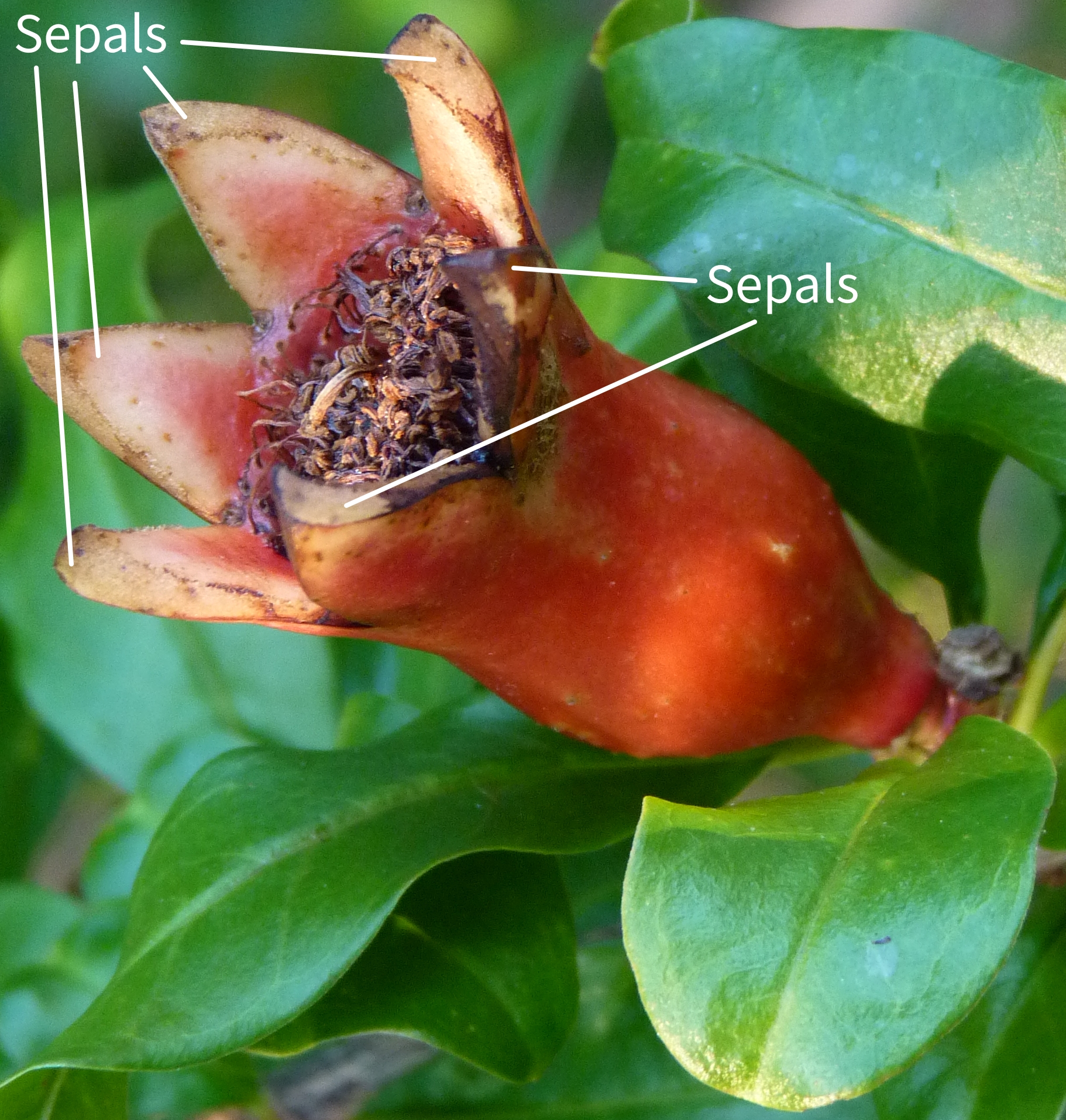
- sepals.jpg (2.23 MiB) Viewed 6707 times
The flowers of a pomegranate bush, each of those flowers stores the plants very own sexual organs.
Here are the Petals of a male pomegranate flower.
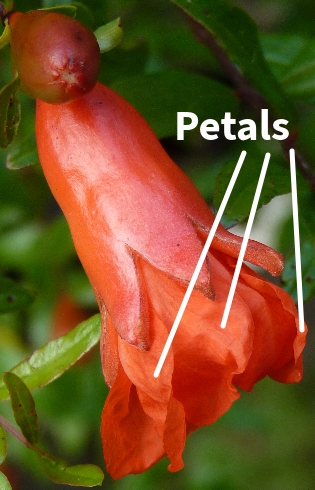
- P1460171_Small.jpg (136.83 KiB) Viewed 6633 times
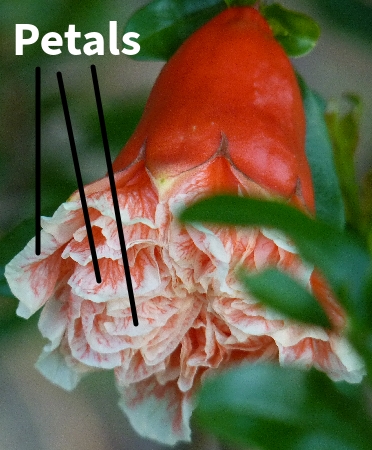
- P1450723_Small.jpg (155.36 KiB) Viewed 6562 times
The receptacle of a pomegranate flower/a pomegranate fruit is where the flower/fruit attaches to the plant, and it's also where the 'Carpel' forms, 'Carpel' are the female sexual organs of the flowers, those female sexual organs are inside the flowers, see the receptacles in these two photos.
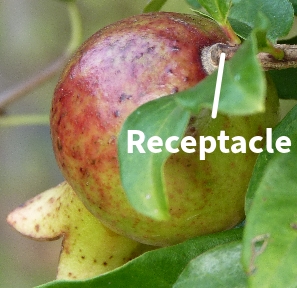
- P1540571_Small_LBD.jpg (81.2 KiB) Viewed 6634 times
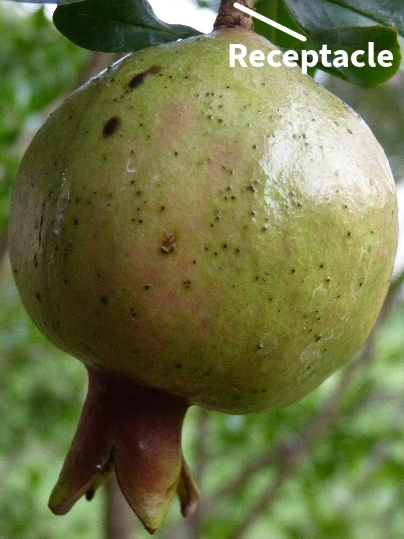
- P1490864_Small_LBD.jpg (184.43 KiB) Viewed 6634 times
The following diagram shows the top two parts of the 'Carpel', which are the 'style', and the 'stigma' of a flower. The 'stigma' is where pomegranate pollen needs to touch in order for fruit to develop. Pollen is a plant's version of sperm.
The following flower was in the 'intermediate' stage of a bisexual flower's development, which is when the female organs start to develop, which eventually can lead to a ripe fruit, at this point it's still long before this flower could turn in to edible fruit.
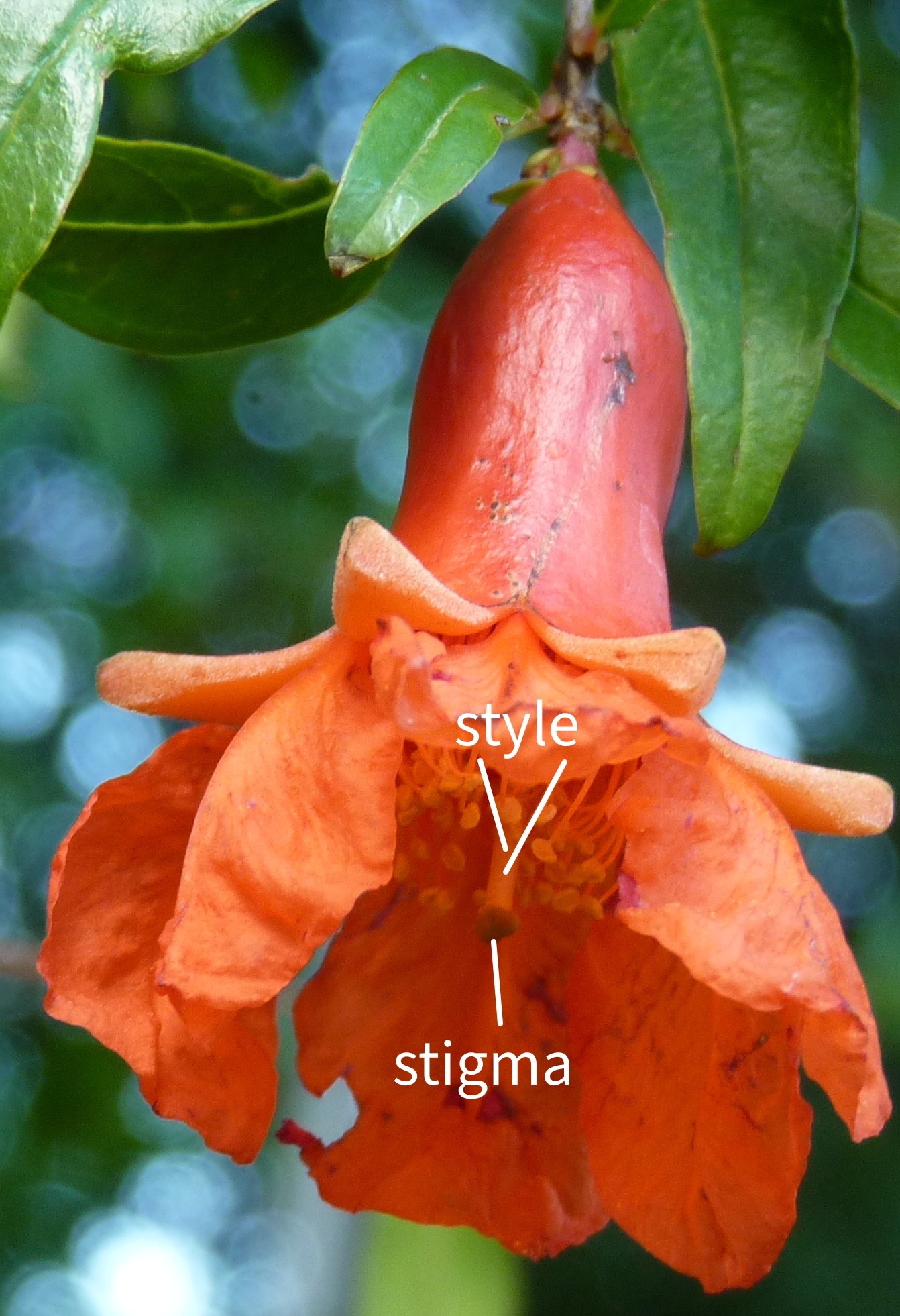
- style_stigma.jpg (1.63 MiB) Viewed 6698 times
This is what the 'intermediate' stage of a male bloom may look like, see the following two photos
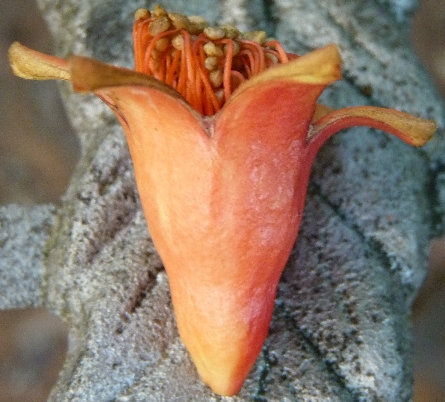
- P1430635_Small.jpg (156.64 KiB) Viewed 6664 times
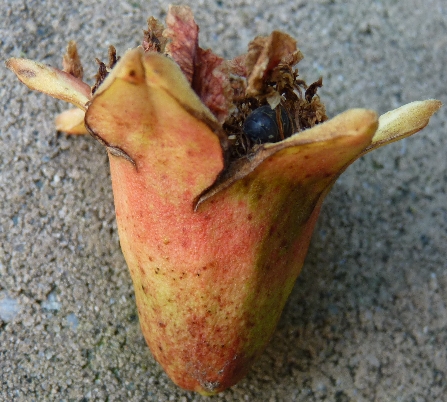
- P1440467_Small.jpg (176.21 KiB) Viewed 6563 times
This is what those flowers looked like cut open, when a male bloom aborts in the intermediate blooming stage, that is caused by the flower's own inability to pollinate it's self, cross-pollination from another pomegranate plant can not help turn the flower in to fruit, since it's male. Oddly some male flowers do appear to start producing the place for the female parts, yet such male flowers are not capable of producing the actual female parts just the same.
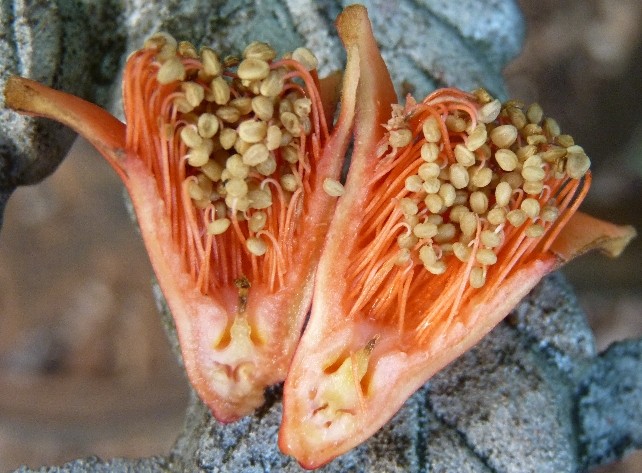
- P1430675_Small.jpg (285.63 KiB) Viewed 6680 times
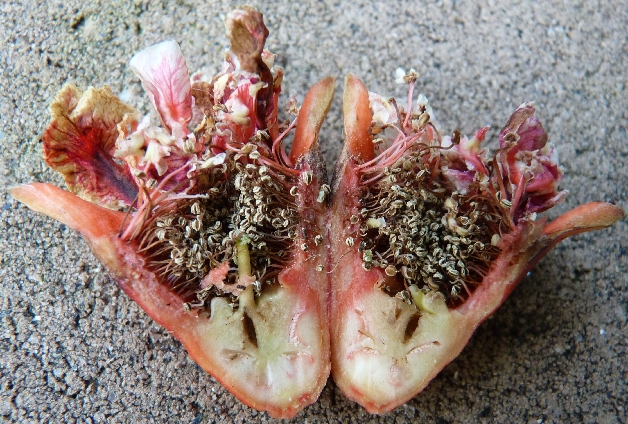
- P1440565_Small.jpg (328.9 KiB) Viewed 6563 times
The 'perfect flower' blooming stage of a pomegranate bush, is when the 'intermediate blooming' stage of a bisexual flower has functioning female flower parts actually making the fruit. These flowers are often called 'perfect flower' because they are so well developed that they probably are going to turn in to a fruit.
Here is a flower in the 'perfect flower' blooming stage cut open, it's closer to a developed fruit, than the one in the photo above was. Despite the fact that it entered the 'perfect flower' blooming stage, the flower still aborted.
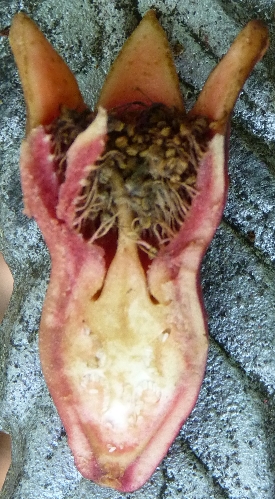
- P1430540_Small.jpg (161.01 KiB) Viewed 6676 times
Here is what this aborted 'perfect flower' looks like not cut open
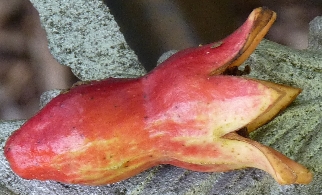
- P1430442_Small.jpg (69.9 KiB) Viewed 6666 times
Here is another 'perfect flower' not cut open, it's 'sepals' were rotting from a fungus disease
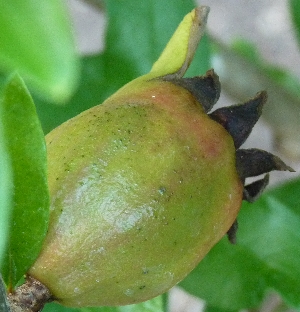
- P1480904_Small.jpg (82.2 KiB) Viewed 6561 times
The 'perfect flower' blooms, are said to be of a vase-shape (urcerate), and as the 'perfect flower' blooms it turns more and more fruit like as they grow wider and wider at the backside of the flower, most of them successfully continue to do so until the flower turns in to a ripe fruit, see these photos to get a better understanding
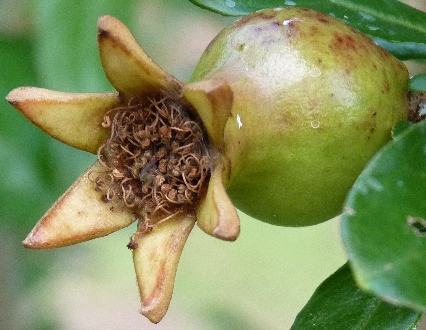
- P1460273_Small.jpg (129.27 KiB) Viewed 6643 times

- P1540571_Small.jpg (76.48 KiB) Viewed 6643 times
The following diagram shows the two parts of the 'stamen', which are the 'filament', and the 'anther' of a flower. The 'anther' is a sac full of pollen, pollen is a plant's version of sperm. These are found on all pomegranate flowers, and they even remain on the ripe fruit, inside the 'persistent calyx'!
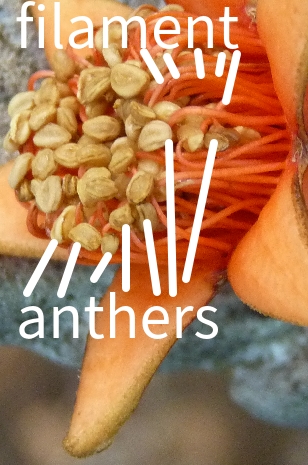
- Anthers_filament_Stamens.jpg (139.39 KiB) Viewed 6700 times
The flowers